CK2 phosphorylation of an acidic Ser/Thr di-isoleucine motif in the Na+/H+ exchanger NHE5 isoform promotes association with beta-arrestin2 and endocytosis
- PMID: 21296876
- PMCID: PMC3064201
- DOI: 10.1074/jbc.M110.182881
CK2 phosphorylation of an acidic Ser/Thr di-isoleucine motif in the Na+/H+ exchanger NHE5 isoform promotes association with beta-arrestin2 and endocytosis
Abstract
Internalization of the Na(+)/H(+) exchanger NHE5 into recycling endosomes is enhanced by the endocytic adaptor proteins β-arrestin1 and -2, best known for their preferential recognition of ligand-activated G protein-coupled receptors (GPCRs). However, the mechanism underlying their atypical association with non-GPCRs, such as NHE5, is unknown. In this study, we identified a highly acidic, serine/threonine-rich, di-isoleucine motif (amino acids 697-723) in the cytoplasmic C terminus of NHE5 that is recognized by β-arrestin2. Gross deletions of this site decreased the state of phosphorylation of NHE5 as well as its binding and responsiveness to β-arrestin2 in intact cells. More refined in vitro analyses showed that this site was robustly phosphorylated by the acidotropic protein kinase CK2, whereas other kinases, such as CK1 or the GPCR kinase GRK2, were considerably less potent. Simultaneous mutation of five Ser/Thr residues within 702-714 to Ala ((702)ST/AA(714)) abolished phosphorylation and binding of β-arrestin2. In transfected cells, the CK2 catalytic α subunit formed a complex with NHE5 and decreased wild-type but not (702)ST/AA(714) NHE5 activity, further supporting a regulatory role for this kinase. The rate of internalization of (702)ST/AA(714) was also diminished and relatively insensitive to overexpression of β-arrestin2. However, unlike in vitro, this mutant retained its ability to form a complex with β-arrestin2 despite its lack of responsiveness. Additional mutations of two di-isoleucine-based motifs (I697A/L698A and I722A/I723A) that immediately flank the acidic cluster, either separately or together, were required to disrupt their association. These data demonstrate that discrete elements of an elaborate sorting signal in NHE5 contribute to β-arrestin2 binding and trafficking along the recycling endosomal pathway.
Figures

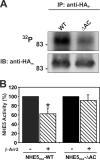
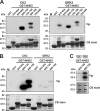
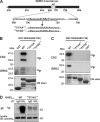


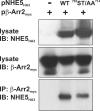

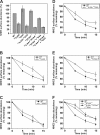
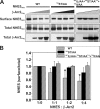
Similar articles
-
beta-Arrestins bind and decrease cell-surface abundance of the Na+/H+ exchanger NHE5 isoform.Proc Natl Acad Sci U S A. 2005 Feb 22;102(8):2790-5. doi: 10.1073/pnas.0407444102. Epub 2005 Feb 7. Proc Natl Acad Sci U S A. 2005. PMID: 15699339 Free PMC article.
-
Post-endocytic fates of delta-opioid receptor are regulated by GRK2-mediated receptor phosphorylation and distinct beta-arrestin isoforms.J Neurochem. 2008 Jul;106(2):781-92. doi: 10.1111/j.1471-4159.2008.05431.x. Epub 2008 Apr 17. J Neurochem. 2008. PMID: 18419762
-
Phosphorylation of beta-arrestin2 regulates its function in internalization of beta(2)-adrenergic receptors.Biochemistry. 2002 Aug 27;41(34):10692-9. doi: 10.1021/bi025705n. Biochemistry. 2002. PMID: 12186555
-
G protein-coupled receptor sorting to endosomes and lysosomes.Annu Rev Pharmacol Toxicol. 2008;48:601-29. doi: 10.1146/annurev.pharmtox.48.113006.094646. Annu Rev Pharmacol Toxicol. 2008. PMID: 17995450 Free PMC article. Review.
-
G protein-coupled receptor kinase type 2 and β-arrestin2: Key players in immune cell functions and inflammation.Cell Signal. 2022 Jul;95:110337. doi: 10.1016/j.cellsig.2022.110337. Epub 2022 Apr 21. Cell Signal. 2022. PMID: 35461901 Review.
Cited by
-
Traditional and emerging roles for the SLC9 Na+/H+ exchangers.Pflugers Arch. 2014 Jan;466(1):61-76. doi: 10.1007/s00424-013-1408-8. Epub 2013 Dec 12. Pflugers Arch. 2014. PMID: 24337822 Review.
-
Novel role of GRK2 in isoprenaline-induced activation of Na+/H+ exchanger 3 independent of β2-adrenergic receptor signaling.Mol Biol Rep. 2025 Feb 11;52(1):218. doi: 10.1007/s11033-025-10326-4. Mol Biol Rep. 2025. PMID: 39932653
-
SLC9/NHE gene family, a plasma membrane and organellar family of Na⁺/H⁺ exchangers.Mol Aspects Med. 2013 Apr-Jun;34(2-3):236-51. doi: 10.1016/j.mam.2012.05.001. Mol Aspects Med. 2013. PMID: 23506868 Free PMC article. Review.
-
Quantitative network mapping of the human kinome interactome reveals new clues for rational kinase inhibitor discovery and individualized cancer therapy.Oncotarget. 2014 Jun 15;5(11):3697-710. doi: 10.18632/oncotarget.1984. Oncotarget. 2014. PMID: 25003367 Free PMC article.
-
Regulation of Mct1 by cAMP-dependent internalization in rat brain endothelial cells.Brain Res. 2012 Oct 22;1480:1-11. doi: 10.1016/j.brainres.2012.08.026. Epub 2012 Aug 20. Brain Res. 2012. PMID: 22925948 Free PMC article.
References
Publication types
MeSH terms
Substances
Grants and funding
LinkOut - more resources
Full Text Sources
Molecular Biology Databases
Research Materials

